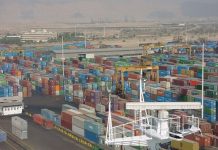ISLAMABAD: The second phase of the China-Pakistan Economic Corridor is aimed at accelerating the socio-economic development across the country, WealthPK reports.
Engagement in various fields ranging from agricultural growth to expansion of the tourism industry and enhancing technical, educational and healthcare facilities, besides joint ventures to minimise the effects of climate change are salient features of the second phase of this mega game-changer project. This phase will also focus on poverty alleviation through agricultural and industrial cooperation between the two friendly countries.
Dr Sadia Sulaiman, a lecturer at Quaid-i-Azam University Islamabad, stressed the need for prioritising the socio-economic development projects, already identified by the Joint Cooperation Committee (JCC) of CPEC for its second phase. These include 27 projects in six sectors including agriculture, health, education, drinking water supply, poverty alleviation and vocational and technical education.
She said that effective development communication and engagement with local communities are not only important for the cogency and long-term success of CPEC projects but also crucial for addressing the socio-economic needs of the common people.
Dr Sadia told WealthPK that a smart approach in that context could be to synchronise the CPEC projects with the Sustainable Development Goals (SDGs) set by the United Nations. Pakistan was among the first few countries to adopt the SDGs in 2016. However, Pakistan is facing challenges in achieving these goals owing to a shortage of resources. So its ranking has dropped on the global SDGs index from 115 in 2016 to 134 in 2020.
Pakistan’s performance in the health and education sectors has remained miserable as the infant mortality rate in the country stands at around 50 percent and the literacy rate is from 30 percent to 40 percent.
Both CPEC and SDGs are two important components of Pakistan’s development policy. Their interplay in the urban and rural settings provides a unique and distinctive account of the actual socio-economic situation in the areas of CPEC projects. This approach would save both energy and money, invested separately in the achievement of SDGs and CPEC development goals.
The CPEC projects have the potential of generating 700,000 jobs and multiple business opportunities. However, there has been little focus on the socio-economic benefits of CPEC, especially its impacts on the health and education sectors.
During the first phase of CPEC, the Community Investment Plan (CIP) for the socio-economic uplift of the communities living in the areas of the projects remained a key feature of various schemes. It is expected that the projects being initiated in the second phase would accelerate socio-development across the country.






